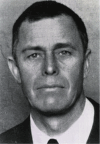The History of Breast Cancer Early Detection: 1865 - 2020
- PMID: 39717616
- PMCID: PMC11663696
- DOI: 10.2147/BCTT.S476416
The History of Breast Cancer Early Detection: 1865 - 2020
Abstract
Early detection is a relative newcomer in medicine, with its efficacy relying not only on therapy but also on the availability of evidence supporting the advantage of treatment at an earlier stage. Late 19th century histologic evidence that cancer begins as a single primary focus and Halsted's centrifugal theory of stepwise spread (breast, regional nodes, and systemic distribution) provided the rationale for both en bloc surgery and the lifesaving benefit of early detection. Clinicians soon noticed exceptions to this ordered timeline, and pathologists identified histological features that questioned its primacy; however, Bernard Fisher spearheaded the initial challenge. His groundbreaking hypothesis that breast cancer was systemic from its inception was supported indirectly by the 3rd arm of National Surgical Adjuvant Breast and Bowel Project (NSABP) B04 and B06. These trials bolster his contention that a patient's fate was dependent on shed cells rather than the extent of the operation; however, the breast cancer wars of the 1970s focused on competing local treatments. When follow-up data revealed equivalent survival results, it established lumpectomy/radiation as equal to mastectomy, but overlooked Fisher's attack on Halsted's theory. Two mid-20th century medical innovations also played a role in the history of early detection: population-based screening by detecting cancer before it became clinically evident, and repurposing systemic treatment designed for metastatic recurrence into adjuvant chemotherapy. This review illustrates how these advances have led to the incremental acceptance of Fisher's hypothesis and recognition that invasive cancer cannot be equated with localized disease, regardless of how early it might be detected.
Keywords: Bernard Fisher; Halsted; circulating tumor cells; early detection of breast cancer; liquid biopsy; mammography.
© 2024 Gump et al.
Conflict of interest statement
The authors report no conflicts of interest in this work.
Figures



References
-
- De Moulin D. A Short History of Breast Cancer. Boston: Martinus Nijhoff; 1983.
-
- Haagensen CD, Lloyd WEB. A Hundred Years of Medicine. Sheridan House; 1943.
-
- Waldeyer‐Hartz HWGV. https://www.accessscience.com/content/biography/m0081900. Accessed September 28, 2024.
LinkOut - more resources
Full Text Sources
Research Materials

